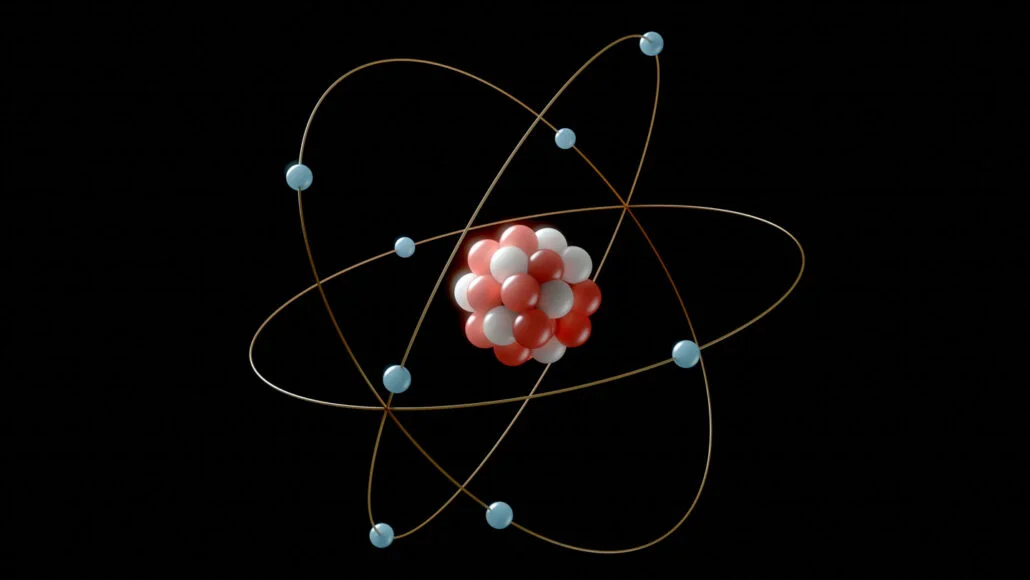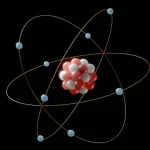Electron Ballistics: The Study of Electron Motion in Fields

Electron ballistics is the specialized study of how electrons move through various media and electromagnetic fields, tracing their paths much like traditional ballistics tracks projectiles. This fascinating intersection of physics and electronics examines how these fundamental particles behave when subjected to electrical and magnetic influences. What is electron ballistics? It’s the science that analyzes the trajectory, velocity, and behavior of electrons as they travel through different environments, from vacuum tubes to semiconductor materials. This field has become increasingly crucial for developing advanced technologies in computing, medical imaging, and particle acceleration.
- Historical Development: From Cathode Rays to Quantum Theory
- Fundamental Principles: Forces Governing Electron Motion
- Table: Electron Behavior in Different Environments
- Mathematical Framework: Equations of Electron Motion
- Measurement Techniques: Tracking Electron Paths
- Vacuum Electron Devices: Classical Applications
- Semiconductor Applications: Modern Electronics
- Medical and Analytical Applications: Precision Instrumentation
- Space and Astrophysical Context: Natural Electron Ballistics
- Future Directions: Quantum and Relativistic Frontiers
- Frequently Asked Questions (FAQ)
The principles of electron ballistics draw heavily from both classical and quantum physics, incorporating concepts from electromagnetism, relativity, and quantum mechanics. Understanding how electrons move and interact enables engineers to design more efficient electronic devices, while helping physicists explore fundamental questions about matter and energy. From the cathode ray tubes in older televisions to the sophisticated electron microscopes used in modern laboratories, applications of electron ballistic principles are widespread across multiple scientific and technological domains.
Historical Development: From Cathode Rays to Quantum Theory
The study of electron ballistics began in the late 19th century with investigations into cathode rays. When were electrons first studied ballistically? In 1897, J.J. Thomson’s famous experiment measuring the charge-to-mass ratio of electrons marked the birth of both electron discovery and electron ballistic studies. His work demonstrated that cathode rays consisted of discrete particles with specific mass and charge, opening the door to understanding their behavior in electromagnetic fields.
The early 20th century saw significant advances with the development of vacuum tube technology, where electron ballistics became essential for designing components like diodes, triodes, and cathode ray tubes. Who contributed to early electron ballistics? Scientists like Philipp Lenard, who studied electron emission, and William Shockley, who applied these principles to semiconductor development, made foundational contributions. The emergence of quantum mechanics in the 1920s added a new dimension to the field, revealing the wave-like properties of electrons and their probabilistic behavior, which complemented rather than replaced the classical ballistic approach for many practical applications.
Fundamental Principles: Forces Governing Electron Motion
Electron ballistics operates on several key physical principles that govern how electrons move through space and matter. How do forces affect electron motion? The primary force acting on electrons is the electromagnetic force, described by Lorentz force law: F = q(E + v × B), where electrons experience acceleration proportional to electric fields (E) and deflection from magnetic fields (B). In vacuum environments, electrons follow predictable parabolic trajectories under constant electric fields, similar to projectiles under gravity.
When electrons move through materials, additional factors come into play, including collisions with atoms, scattering phenomena, and energy loss mechanisms. The mean free path—the average distance an electron travels between collisions—becomes a critical parameter in these environments. At high velocities approaching the speed of light, relativistic effects must be considered, as the electron mass increases and its behavior diverges from Newtonian predictions. These principles collectively provide the theoretical foundation for predicting and controlling electron motion across diverse applications.
Table: Electron Behavior in Different Environments
| Environment | Primary Forces | Typical Trajectory | Key Applications |
|---|---|---|---|
| High Vacuum | Electric and magnetic fields | Parabolic/helical | Electron microscopes, CRT displays |
| Semiconductors | Electric fields, crystal forces | Diffusive with scattering | Transistors, integrated circuits |
| Gases | Electric fields, collisions with gas molecules | Random walk with drift | Gas-filled detectors, neon signs |
| Plasmas | Collective electromagnetic fields | Complex collective motion | Fusion research, plasma processing |
| Solids (metals) | Lattice interactions, electric fields | Fermi surface determined | Electrical conduction, superconductivity |
Mathematical Framework: Equations of Electron Motion
The behavior of electrons in electromagnetic fields is described by a set of fundamental equations that form the mathematical backbone of electron ballistics. What equations govern electron trajectories? The motion of non-relativistic electrons in electric and magnetic fields follows Newton’s second law with the Lorentz force: m(d²r/dt²) = -e(E + dr/dt × B), where m is electron mass, e is electron charge, r is position, and E and B are electric and magnetic field vectors. These differential equations can be solved for specific field configurations to predict electron paths.
In more complex scenarios, particularly when electron velocities approach the speed of light, relativistic mechanics must be applied. The relativistic version incorporates the Lorentz factor γ = 1/√(1-v²/c²), which accounts for the velocity-dependent mass increase. For electrons moving through materials, additional terms representing scattering, energy loss, and quantum mechanical effects must be included. Computational methods, including finite element analysis and Monte Carlo simulations, have become essential tools for solving these complex equations in practical applications where analytical solutions are impossible.
Measurement Techniques: Tracking Electron Paths
Accurately measuring and visualizing electron trajectories requires sophisticated instrumentation. How do scientists study electron motion? One fundamental approach uses cathode ray tubes with fluorescent screens, where the impact of electrons creates visible spots that trace their paths through applied fields. More advanced methods include electron beam tomography, which reconstructs three-dimensional trajectories from multiple projections, and streak cameras that capture ultrafast electron motion with picosecond resolution.
Modern research employs techniques like electron holography, which uses interference patterns to map electromagnetic fields and their effect on electrons. Scanning electron microscopes with specialized detectors can image electron paths in materials, while particle detectors in accelerators track high-energy electrons with extreme precision. These measurement approaches provide critical experimental validation for theoretical models and enable continuous refinement of our understanding of electron behavior across different energy ranges and environments.
Vacuum Electron Devices: Classical Applications
Traditional applications of electron ballistics center on vacuum-based devices where electrons move through near-perfect vacuums. Where do we see electron ballistics in classic technology? Cathode ray tubes (CRTs) in older televisions and oscilloscopes represent perhaps the most familiar application, using precisely controlled electric and magnetic fields to steer electrons to specific points on a phosphor screen. The deflection sensitivity, spot size, and tracing accuracy in these devices all depend directly on electron ballistic principles.
Other vacuum devices include klystrons and magnetrons used in radar systems and microwave ovens, where electrons interact with resonant cavities to generate or amplify high-frequency electromagnetic waves. Traveling wave tubes employ similar principles for broadband microwave amplification in communications and radar. X-ray tubes use accelerated electrons striking metal targets to produce X-rays for medical and industrial imaging. In all these applications, understanding and controlling electron trajectories through electromagnetic fields is essential for device function and performance optimization.
Semiconductor Applications: Modern Electronics
In semiconductor devices, electron ballistics plays a crucial role in understanding and optimizing device performance. How does electron ballistics apply to semiconductors? As semiconductor features shrink to nanoscale dimensions, electrons can sometimes travel ballistically—without scattering—across short distances within these structures. This ballistic transport enables faster switching speeds and lower power consumption in transistors, making it particularly important for high-performance computing applications.
The study of hot electrons—those with higher than thermal energy—relies heavily on ballistic principles, as these particles can overcome energy barriers or cause device degradation. In heterostructures and quantum wells, ballistic electron emission microscopy (BEEM) provides information about interface properties and Schottky barriers. Understanding ballistic transport has driven innovations like the ballistic transistor, resonant tunneling diodes, and other quantum-effect devices that form the foundation of modern high-speed electronics and potentially future quantum computing architectures.
Medical and Analytical Applications: Precision Instrumentation
Electron ballistics enables numerous medical and analytical technologies that require precise control of electron beams. Where is electron ballistics used in medicine and analysis? Electron microscopes—both transmission (TEM) and scanning (SEM) types—use focused electron beams with precisely controlled trajectories to achieve atomic-scale resolution. The quality of these images depends directly on how well the electron optical system can maintain beam focus and minimize aberrations, both ballistic considerations.
In medical therapy, electron linear accelerators (LINACs) generate and direct high-energy electron beams for radiation therapy, with ballistic calculations ensuring accurate tumor targeting while sparing healthy tissue. Electron beam lithography systems use controlled electron trajectories to create nanoscale patterns for semiconductor manufacturing. Electron spectroscopy techniques, including X-ray photoelectron spectroscopy (XPS) and Auger electron spectroscopy, rely on analyzing the kinetic energy and trajectories of emitted electrons to determine material composition and electronic structure with extreme sensitivity.
Space and Astrophysical Context: Natural Electron Ballistics
Beyond technological applications, electron ballistics helps explain natural phenomena throughout the universe. How does electron ballistics apply in space? In planetary magnetospheres, including Earth’s Van Allen radiation belts, electrons follow complex helical paths along magnetic field lines while drifting around the planet. Understanding these trajectories is essential for predicting space weather effects on satellites and astronauts.
In astrophysical contexts, electron ballistics informs our understanding of pulsar magnetospheres, where electrons moving along curved magnetic field lines generate the observed radiation through synchrotron processes. Solar flares accelerate electrons to relativistic energies along magnetic field lines, with their trajectories determining where they impact the solar atmosphere and produce X-ray emissions. Cosmic rays include high-energy electrons whose paths through interstellar magnetic fields provide clues about their origins. In all these natural systems, the principles of electron motion through electromagnetic fields help unravel complex astrophysical processes.
Future Directions: Quantum and Relativistic Frontiers
The future of electron ballistics lies at the frontiers of quantum and relativistic regimes. What’s next for electron ballistics research? In quantum ballistics, researchers are exploring how electron wavefunctions propagate through nanoscale devices, where quantum coherence and interference effects dominate over classical trajectories. This work has implications for quantum computing, quantum sensing, and fundamental tests of quantum mechanics.
At extremely high energies, such as those achieved in particle accelerators, relativistic electron ballistics must account for radiation losses from accelerated charges (synchrotron radiation) and quantum electrodynamic effects. Laser-plasma acceleration techniques are pushing toward compact high-energy electron sources where ballistic control remains challenging. Emerging materials like graphene exhibit unique ballistic transport properties that may enable novel electronic devices. As technology continues to evolve, our understanding and application of electron ballistic principles will undoubtedly expand into new domains, continuing this field’s rich history of enabling technological innovation.
Frequently Asked Questions (FAQ)
1. What is electron ballistics?
Electron ballistics is the study of how electrons move through electromagnetic fields and various media, analyzing their trajectories, velocities, and interactions similar to how traditional ballistics studies projectile motion.
2. When did electron ballistics emerge as a field?
The field began in earnest with J.J. Thomson’s discovery of the electron in 1897 and developed throughout the early 20th century alongside vacuum tube technology and quantum mechanics.
3. Who uses electron ballistics principles?
Physicists, electrical engineers, semiconductor researchers, medical device developers, and astrophysicists all apply electron ballistic principles in their work.
4. About what size scale does ballistic transport occur in semiconductors?
Ballistic transport becomes significant at nanoscale dimensions, typically below 10-100 nanometers, depending on the material and temperature.
5. How does electron ballistics differ from electron optics?
Electron ballistics focuses on the trajectories and motion of individual electrons, while electron optics uses collective electron behavior to form and manipulate electron beams, analogous to how light optics works with photons.
Keywords: Electron, Ballistics, Physics, Energy, Force, Motion, Trajectory, Field, Semiconductor, Vacuum, Measurement, Technology, Application, Quantum, Relativity
Tags: #ElectronBallistics #Physics #Electronics #Semiconductors #QuantumPhysics #ElectronMicroscopy #Technology #Science #Engineering #AppliedPhysics
























